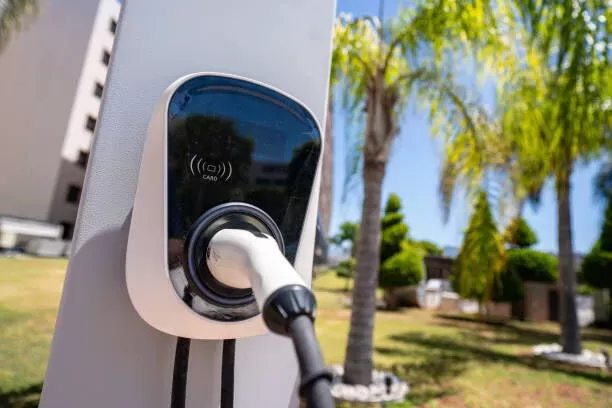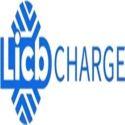Notifications

7 minutes, 5 seconds
-214 Views 0 Comments 0 Likes 0 Reviews

EV Charging Safety Guide: Essential Tips for Home and Public Use
LiCB Charge, a premier EV charger manufacturer in China, delivers dependable AC and DC electric vehicle charging stations along with comprehensive charging solutions.
As electric vehicles (EVs) become increasingly popular worldwide, ensuring safety at EV charging stations is a top priority for homeowners, businesses, and public planners. Whether you’re charging at home or at a public station, understanding the potential risks and following best practices is key to a safe and efficient charging experience.
This guide covers important EV charging safety tips, organized by charging levels, home versus public station use, and general maintenance advice to help keep you, your family, and your vehicle safe.
EV charging comes in three main levels—Level 1, Level 2, and DC Fast Charging (Level 3)—each with unique power needs and safety considerations.
Level 1 Charging: Slow and Simple
Power Source: Standard 120V household outlet
Charging Speed: Adds roughly 3-5 miles of range per hour
Installation: No special setup; plug directly into a wall socket
Best For: Plug-in hybrids or EVs with light daily driving needs
Level 1 Safety Tips:
Use a dedicated outlet rated for the charger’s amperage; avoid sharing with other devices.
Never use extension cords, power strips, or adapters to prevent overheating and fire risk.
Choose chargers certified by recognized labs (UL, ETL, CSA).
Arrange cables to prevent tripping hazards; secure with clips or floor covers if needed.
Regularly inspect cords and plugs for damage or wear.
Level 2 Charging: Faster and More Efficient
Power Source: 240V outlet (like those for dryers or ovens)
Charging Speed: Adds 20-60 miles of range per hour
Installation: Requires professional installation of a dedicated 240V circuit and often a wall-mounted station
Best For: Homeowners with longer commutes or workplace charging
Level 2 Safety Tips:
Always hire a licensed electrician for installation to reduce fire risk.
Ensure a dedicated circuit is installed to avoid overloading your electrical panel.
Use chargers with built-in ground fault circuit interrupter (GFCI) protection or install a GFCI breaker separately.
For outdoor chargers, select weather-resistant models and install protective covers.
Follow manufacturer guidelines for maintenance; replace worn cables and connectors immediately.
DC Fast Charging (Level 3): High Power, Public Use
Power Source: Industrial-grade DC supply
Charging Speed: Provides 60-100+ miles of range in 15-30 minutes
Installation: Requires specialized infrastructure, unsuitable for residential use
Best For: Quick charging during long-distance travel or urban top-ups
DC Fast Charging Safety Tips:
Use only certified and well-maintained public charging stations.
Do not force plugs that don’t fit properly to avoid damage or sparks.
Monitor charging progress and unplug promptly after completion to prevent overheating.
Stop charging immediately if you notice sparks, smoke, or unusual odors and report the issue.
Use Certified Equipment
Always buy and install chargers certified by recognized safety labs (UL, CSA, ETL) to ensure compliance with rigorous standards.
Avoid Water Exposure
Charge only in dry conditions unless your charger is rated for outdoor use. Use weatherproof covers and dry connectors before use if damp.
Install Residual Current Devices (RCDs)
RCDs (or GFCIs) detect electrical faults and shut off power to prevent shocks and fires. Many Level 2 chargers include built-in RCDs; otherwise, install one externally.
Keep Charging Components Away from Children
Store cables and connectors securely to avoid electric shock and tripping hazards.
Perform Regular Inspections
Check your charger, cables, and connectors frequently for signs of wear such as cracks, exposed wires, scorch marks, or melting. Replace any damaged parts immediately and never force connections.
Hire a Licensed Electrician:
A professional can assess your home’s electrical capacity, install a dedicated circuit, and ensure compliance with local codes and permits.
Select an Appropriate Location:
Choose a spot with good ventilation, protection from water and direct sunlight, and easy access to your vehicle’s charging port.
Secure Required Permits:
Check local regulations and obtain any necessary permits or inspections before installation.
Park Responsibly:
Don’t occupy charging spots longer than needed, especially after your vehicle is fully charged.
Inspect Equipment Before Use:
Avoid using visibly damaged or malfunctioning chargers; report any issues to the station operator.
Avoid Cable Hazards:
Position your vehicle to prevent stretching or pinching the cable, and never block walkways.
Stay Alert:
Be aware of your surroundings, especially in poorly lit or unfamiliar areas.
Overheating or Fire:
If safe, unplug the charger immediately; if not, move away and call emergency services.
Electric Shocks or Sparks:
Stop charging at once and contact a professional or the station operator.
Tripped Breakers or Blown Fuses:
Do not attempt repairs yourself; consult a qualified electrician to diagnose and fix issues.
Electric vehicles are transforming transportation, and safe charging practices are essential to protect you, your vehicle, and your property. By using certified equipment, following proper installation procedures, performing routine maintenance, and staying vigilant, you can enjoy the benefits of EV driving with confidence and peace of mind.Know more about Google SEO Directory
China EV Chargers EV Charger Manufacturer Smart EV Chargers Electric Car Chargers Electric Vehicle Chargers Electric Car Charging Stations

